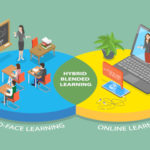Some of the best educational content develops with creative thinking and a willingness to try new things–and if teachers and students have the right tools, they’re on the right path.
Think about how students today communicate outside of school–so much of it is video-based, and if educators can meet students in that space, they’ll be able to create more engaging and impactful lessons. In the TikTok, Instagram Video and Snapchat era, video has also provided the perfect medium to encourage and empower intuitive content creation in classroom environments.
Learn more during this eSchool News webinar featuring educators and edtech experts who can speak to how video lets teachers gauge student understanding, enables students to access content at their own pace, and more.
More from eSchool News
Who would have thought that we would still be teaching in the midst of a pandemic? At the beginning of this school year, public school districts had to make important decisions about how to approach this school year. How would they keep students safe? How would they continue to engage students in learning? And, how would they support teachers in the process?
Over the past year and a half, “hybrid learning” has become quite the buzzword when it comes to education. With the COVID-19 pandemic impacting learners across the world, we’ve witnessed the growing need for hybrid learning, an education option that combines the benefits of a traditional in-person classroom and online learning.
Prior to the pandemic, many schools, colleges, and universities had indoor air quality challenges, but the past 18 months has brought a heightened awareness to a growing problem. Forty percent of the nation’s school systems need to replace at least half of their HVAC systems, according to a 2020 study by the Government Accountability Office.
Want to share a great resource? Let us know at submissions@eschoolmedia.com.


:max_bytes(150000):strip_icc()/Health-GettyImages-1342980570-80531d9053c343799c89a6dbe9fcb768.jpg)












